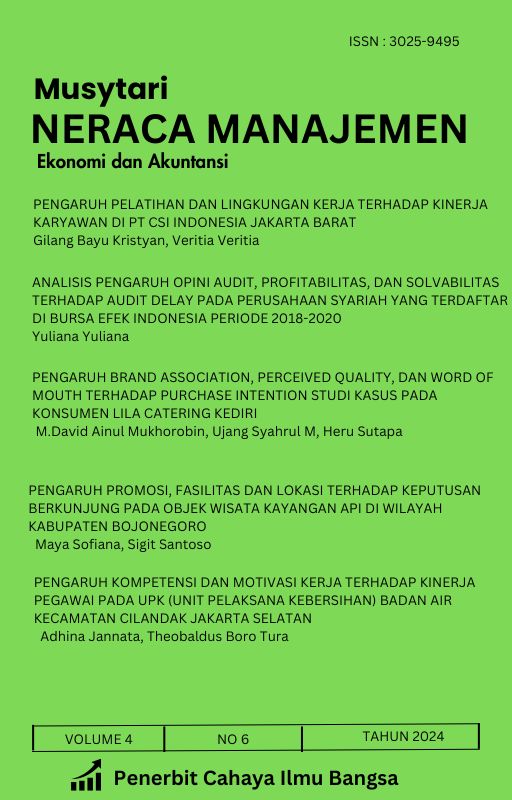Published 2025-06-24
Keywords
- Color selection,
- consumer behavior,
- marketing strategy,
- visual branding,
- purchase decision
How to Cite
Abstract
This study examines the influence of color selection on consumer purchasing decisions as part of a broader marketing strategy. The objective is to provide market actors with empirical insights into how color choices in product packaging and visual branding can affect consumer behavior. Employing a quantitative research design, the study utilized online survey instruments distributed to 94 respondents selected through the Slovin formula from a population of undergraduate communication science students. The collected data were analyzed using validity and reliability tests, followed by simple linear regression and correlation analysis. Results indicate a significant relationship between color selection and purchasing decisions, evidenced by a Pearson correlation coefficient of 0.685 and a significance value below 0.05. The F-test outcome (F = 81.431; sig. = 0.000) further confirms the hypothesis that color serves as a determining factor in consumer preferences. These findings suggest that color functions not only as an aesthetic element but also as a psychological stimulus capable of influencing brand perception and decision-making processes. Thus, effective color strategies should be considered a critical component in the development of brand identity and product marketing. The study concludes that a deliberate approach to color usage in marketing can strengthen consumer engagement and increase sales performance.
References
- [1] C. M. Henderson, M. Mazodier, and A. Sundar, "The Color of Support: The Effect of Sponsor–Team Visual Congruence on Sponsorship Performance," J Mark, Vol. 83, No. 3, pp. 50–71, May 2019, doi: 10.1177/0022242919831672.
- [2] F. J. Thumin, "What Psychologists Should Know About Marketing and Advertising Research," J Psychol, Vol. 53, No. 2, pp. 329–347, Apr. 1962, doi: 10.1080/00223980.1962.9916578.
- [3] E. P. Horne and W. K. Linder, "Subject Sensitivity to Color in Estimation of Dot Frequency for Samples of Color Normal and Color Defective Males," J Psychol, Vol. 86, No. 1, pp. 115–121, Jan. 1974, doi: 10.1080/00223980.1974.9923893.
- [4] C. Reeck, N. A. Posner, K. Mrkva, and E. J. Johnson, "Nudging App Adoption: Choice Architecture Facilitates Consumer Uptake of Mobile Apps," J Mark, Vol. 87, No. 4, pp. 510–527, Jul. 2023, doi: 10.1177/00222429221141066.
- [5] M. M. Aslam, "Are You Selling the Right Colour? A Cross‐cultural Review of Colour as a Marketing Cue," Journal of Marketing Communications, Vol. 12, No. 1, pp. 15–30, Mar. 2006, doi: 10.1080/13527260500247827.
- [6] H. Kay and D. E. Clark, "Effects of Injecting 'Local Color' into Advertisements," J Mark, Vol. 23, No. 1, pp. 56–58, Jul. 1958, doi: 10.1177/002224295802300109.
- [7] A. J. van Deursen, "Digital Inequality During a Pandemic: Quantitative Study of Differences in COVID-19–Related Internet Uses and Outcomes Among the General Population," J Med Internet Res, vol. 22, no. 8, p. e20073, Aug. 2020, doi: 10.2196/20073.
- [8] O. D. Apuke, "Quantitative Research Methods: A Synopsis Approach," Kuwait Chapter of Arabian Journal of Business and Management Review, Vol. 6, No. 11, pp. 40–47, Sep. 2017, doi: 10.12816/0040336.

